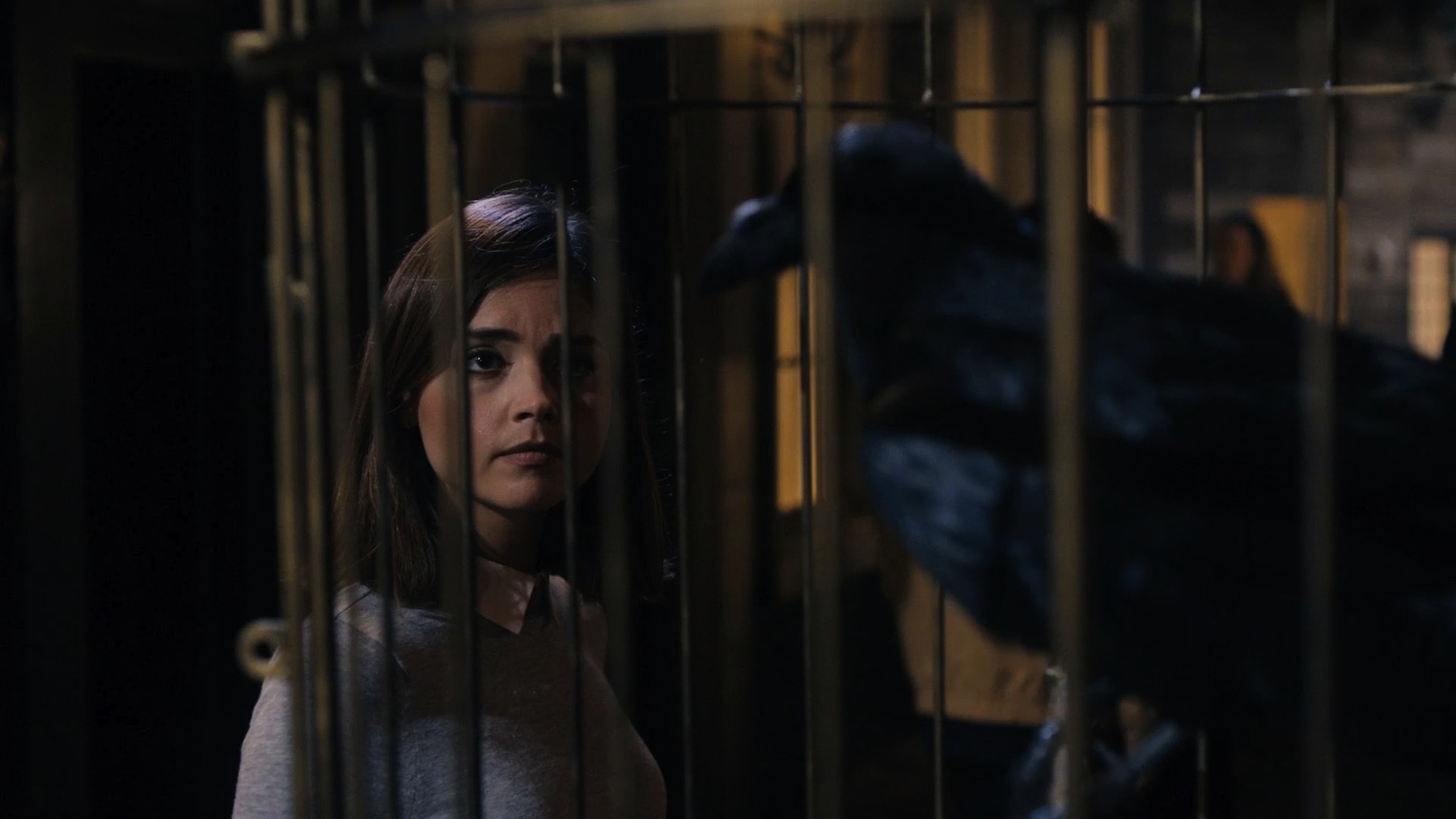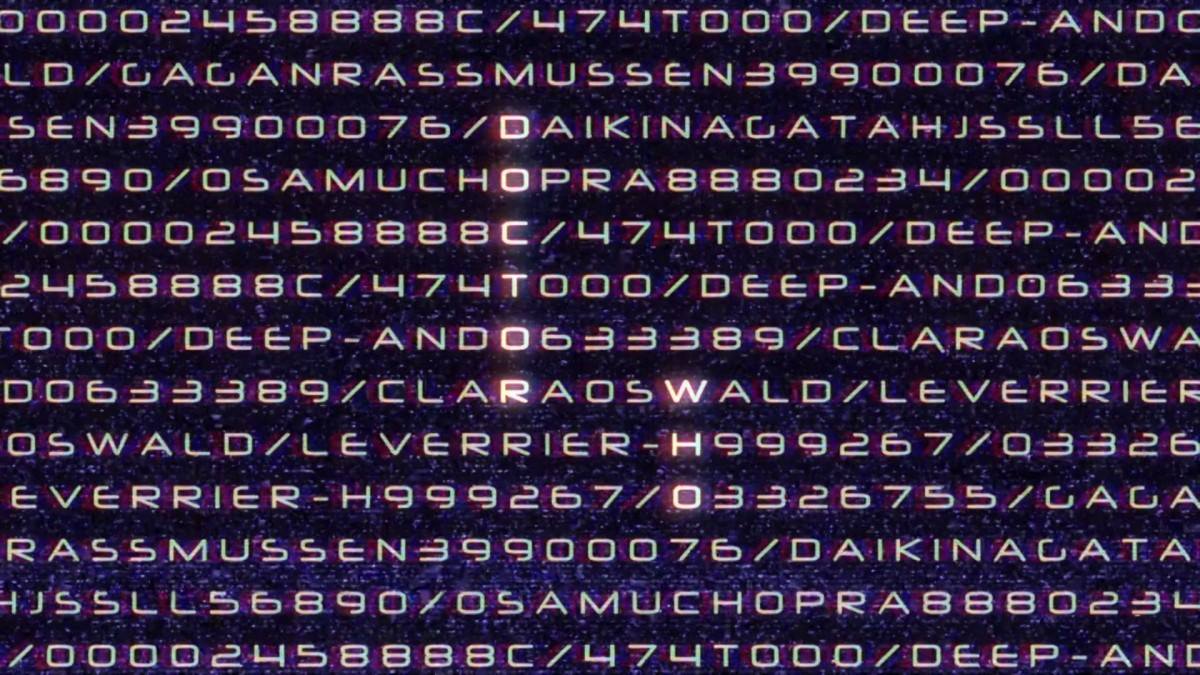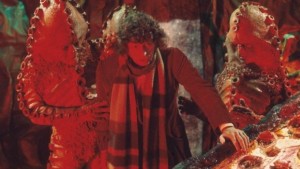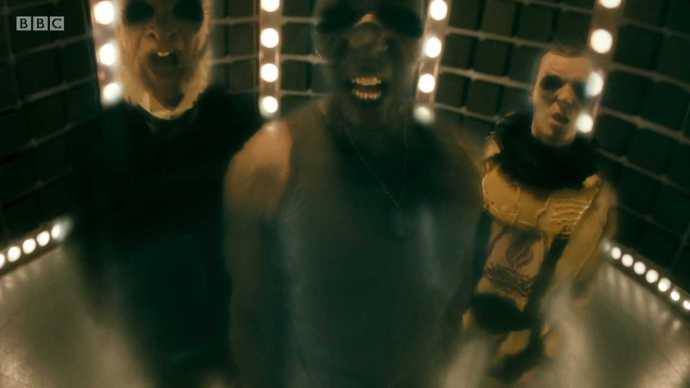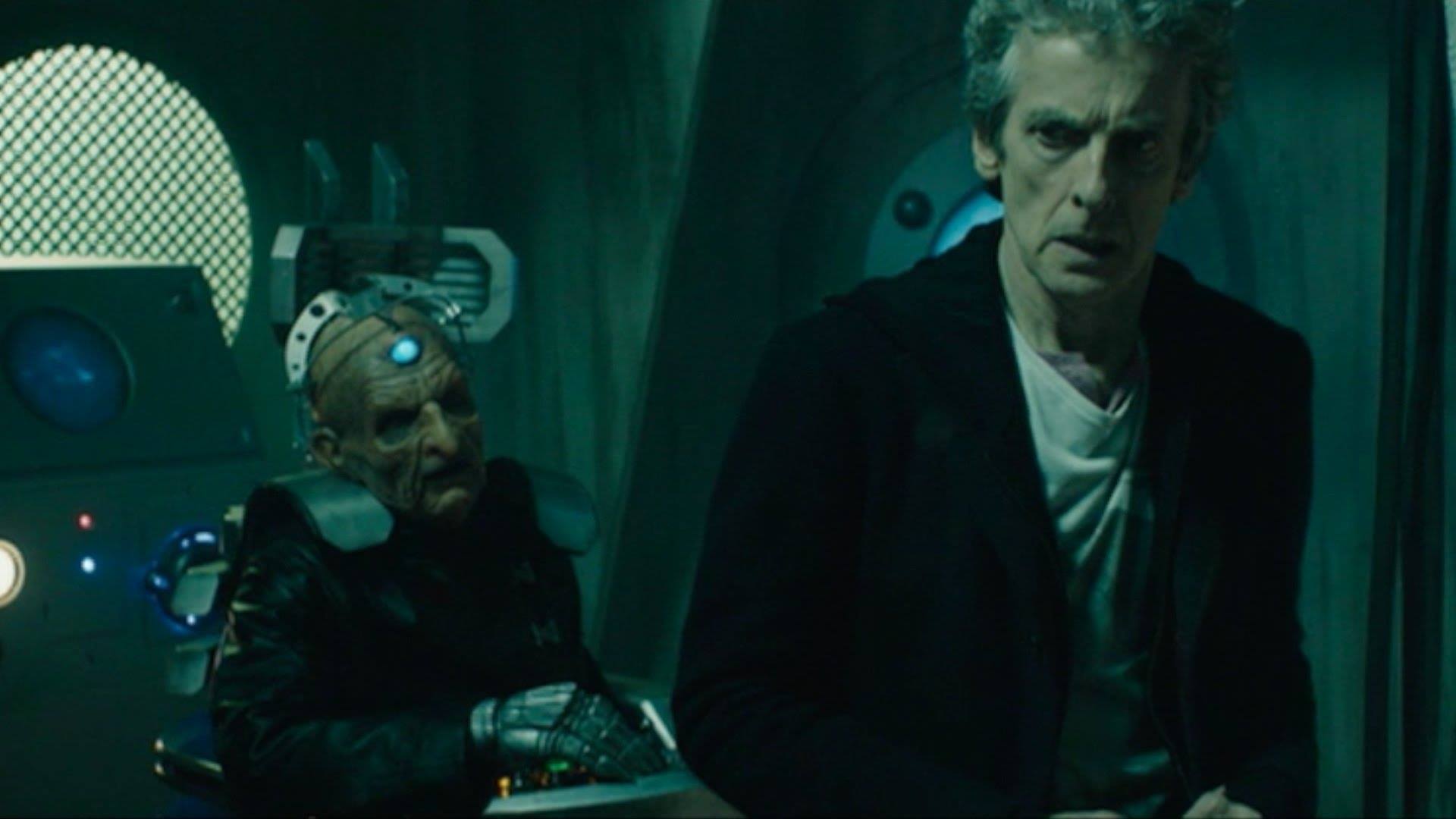“The Husbands of River Song” is a high-speed, campy romp that likely isn’t intended to make complete sense. River got her sonic and we got to see a happy ever after.
Who knew that River Song was a polygamist? Apparently the Doctor did not. He appears genuinely surprised that River, who doesn’t recognize him, is bringing him to her husband – King Hydroflax. But first things first – wasn’t that red, hooded cape gorgeous? I could definitely see myself wearing that over something delicious and sexy when stepping out into a snowy night to meet a Doctorish man. But I digress.
Flying Saucers and Spaceships
River doesn’t recognize the Doctor. I have an issue with that. I don’t have an issue with her not recognizing him at the inception of the show, but seriously, by the time they’re discussing decapitating the king to scoop the diamond from his brain, this writer feels she should have recognized him. Yes, of course regeneration has changed his physicality, but River didn’t just grow to love his physicality did she? Then again, considering her liaison with Ramone, maybe she is mostly drawn to physicality. During regeneration the Doctor receives an entirely new body, inside and out. But given the fact that the he retains memories and the emotions attached to those memories, it would seem that the hearts of the Doctor don’t change. Because of this, there would, in all probability, be something familiar about the Doctor despite his new face, something that might have had River puzzled, wondering what it was about the man that seemed so familiar.
But, nope. Nada. He reminds her of her second wife.
River maintains that she has married the king for the Halassi Androvar diamond that is lodged within his head and threatens his life. As an archeologist, she has pledged to get the diamond and return it to the Halassi. She begins taking things from a bag, emptying it out to place the head in, and we cannot help but notice that the first item she removes from the bag is a red fez. The Doctor appears to be shocked at River’s behavior, her blatant discussion about murdering the king. Her defense is that the king is known as the “butcher of the Bone Meadows, who ends his battles by eating his enemies, dead or alive.” King Hydroflax has heard River’s discussion with the Doctor about removing his head and offers to do that for her. His Cyborg body handily twists his head from the body frame and places it in front of River. A disjointed, somewhat amusing (though not intentionally, but it is a talking head) conversation ensues. As the king plans to kill River, the Doctor threatens the head.
“The Husbands of River Song” is a high-speed, campy romp that likely isn’t intended to make complete sense. It is a special that begins with a very cranky Doctor who plans to criticize any Christmas carolers who knock on the TARDIS door. (The TARDIS it appears has landed on a street that looks virtually identical to the street in “Face the Raven,” though it is decked for the holidays. What a strange and happy television coincidence!). Later, he catches a laughing stitch after having been dropped to a snowy ground. Yes, you heard me, the 12th Doctor caught a stitch of laughter, light-hearted, free laughter. And, nope, River still doesn’t recognize him.
Enter Ramone, another husband/paramour of River’s. Though Ramone doesn’t realize he’s married to her, because she wiped his memory clear of the nuptials simply because he was being annoying. She has no trouble, however, engaging in physical shenanigans with him. She is using Ramone to help her find “damsel.” River uses the code word “damsel” for the Doctor because, Ramone explains, the Doctor (a damsel in distress) apparently requires a lot of rescuing. Prior to this mention, River had already targeted the Doctor’s gender when discussing sawing off the king’s head — “What’s that face? Are you thinking? Stop it. You’re a man, it looks weird.” Men don’t think?
Stealing Time-travel Boxes
Stealing and TARDIS – it seems that these two words tend to go together within the Whoniverse. If the Doctor isn’t stealing the first one from Gallifrey or Clara and Me aren’t stealing a second one that the Doctor stole from Gallifrey, River Song is stealing (ok, borrowing) a TARDIS from the Doctor, only he has never known that. Maybe we need a flow chart for this too. There is a lot about River Song that the Doctor, while unrecognized, is finding out about during this convoluted journey. Perhaps the best bit of acting during “The Husbands of River Song” occurs when the Doctor enters the TARDIS and pretends that he has never previously seen the inside. I am particularly fond of the way he ends the snippet with, “Sorry. I’ve always wanted to see that done properly.” Snort.
How is it that River doesn’t notice that the interior of the TARDIS has been redesigned? Wouldn’t there have been some response to that? As River attempts to take off, a flurried confusion of discussion and switch-flipping, button-pressing occurs until they realize that the TARDIS is locked in place due to the fact that the king’s head in on the inside, but his body is on the outside. Conveniently, there are a lot of convenient moments during this special – how nice that Moffat can make his pen move in that way. The Cyborg body arrives with Ramone’s head. The Doctor shuts the door behind the Cyborg after he enters and the TARDIS begins to take off. The Doctor has no idea where they are going as River is the one who set the coordinates. She has him toss her the head, the TARDIS lands, and she grabs the Doctor by the hand as they run out the door. Moments later, the Doctor finds himself in a spaceship traversing the fourth galaxy. River plans on selling the diamond on this ship – complete with head.
At Warped Speed
Oh, by the way, the restaurant will serve cooked, human (or alien) flesh if you’re interested. They did not indicate if fava beans were on the menu. River is double-crossed, awkwardness is served when they realize that the buyers of the diamond are disciples Hydroflax, a price is placed on the Doctor’s head, the king’s head is obliterated to ash, and River blasts the Doctor’s ability and/or necessity to love while the Doctor winces. River’s speech about the Doctor and love contains my least favorite lines. She likens his loving her back to being small and ordinary as if to be a great and powerful man reduces the need to love. As if love is something that belongs to the underlings of a society. As if her loving the Doctor makes River weak. And, frankly, that ideology permeates too much of society already. However, during her ranting about the Doctor’s emotional ineptitude, she turns, looks into his eyes, and finally recognizes him. Capaldi does an amazing job with this scene. I felt the emotion in his eyes. Once he realizes that River has recognized him, he quietly utters River’s “Hello Sweetie.”
Shortly thereafter they are rescued by a meteor strike, a strike that River knew would arrive and had worked into her escape plan. After they fall through to the lower floor, the Doctor takes the opportunity to ask River how she likes his new body. In what appears to be typical River fashion (but do we really know River?) she responds with, “I’ll let you know, I’ve only seen the face.”
The two of them head for the bridge to attempt to stabilize the ship and decide there’s no saving it. The Doctor attempts to do the “gallant” thing and send River into the TARDIS, but River is having none of that. In the end, they both escape to the TARDIS and eventually crash on Darillium near the Singing Towers. River is unconscious when they land and the doctor uses the time she’s out to arrange dinner. After planting the seed of a restaurant in the mind of a young rescue worker at the crash site, he hands him the diamond to fund the building. Then he brings himself and River four years into the future, the first open reservation for a table that overlooks the Singing Towers.
The Singing Towers
The piece de resistance of this Christmas special is the last 10 minutes. Before dinner at the Singing Tower restaurant, the Doctor hands River a gift – her sonic screwdriver. We heard River tell this story during “Silence in the Library.” The question is will this be their last night together as has been foretold? As a lover of metaphor, I appreciated the conversation between the two as River spoke her pain:
DOCTOR: Mmm. What do you think of the towers?
RIVER: I love them.
DOCTOR: Then why are you ignoring them?
RIVER: They’re ignoring me. But then you can’t expect a monolith to love you back.
The Doctor tears up as he talks about monoliths and songs that are there when you least expect them and when you need them most. A night on Darillium is 24 years. I’m going to go ahead and assume that River and the Doctor will make plenty of haunting, beautiful music together over those 24 years.
End Notes
The core of this story spoke to me. What I could have done without is what I perceived to be saccharine add-ons. For example, the final tag line about living happily. The special would have ended well after River’s “I hate you” and the Doctor’s “No, you don’t.” Adding the script at the end felt like a Disneyesque move. Initially the underlying “love story” felt like a Harlequin romance novel – trite. As a general rule I am all about the love, but in this instance portions of it felt forced and/or too syrupy. Still, both Capaldi and Kingston played the scenes superbly and the chemistry between the two was palpable.
The storyline moved along at the warp speed of the spaceship traveling across the galaxies. While it was not difficult to follow or to make necessary links, I did feel as if we just entered one scene and were on to the next while I was looking back over my shoulder saying, “Wait, I still need to process that,” or “But, I want to see more.”
Many reviews I’ve read indicate that the tone of the story was perfect for a Christmas special. Many loved the feel good, happy overtones. Of the people I’ve spoken with, River’s reappearance was appreciated and the apparent positive ending was also appreciated. I question what happens after the one 24-year night on Darillium, but many feel that the Doctor (and River) will figure out a way to extend their time together beyond those years. Others say that I’m over-thinking things. I ask – how can you ever overthink the timey-wimey, wibbly-wobbly nature of Doctor Who?

